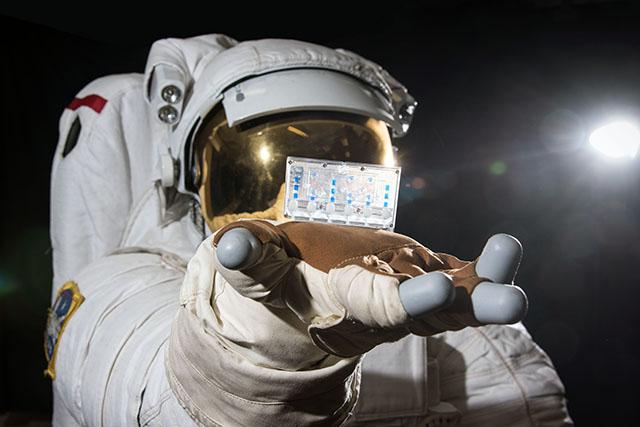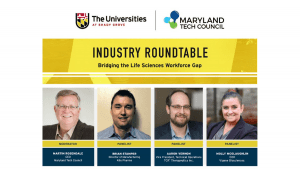
Tissue Chips Deployed on SpaceX May Accelerate Research by Decades Through Disease Modeling in Microgravity
The SpaceX that launched on Nov. 15 took off with scientific investigations for astronauts to work on while in orbit—one of them being tissue chips as a medium to understand the impact of microgravity on human health and disease.
Tissue chips, which are the size of a thumb drive, contain human cells in a 3D matrix that mimic the functions of an organ. “These research tools are well-suited for space travel, since they are miniaturized, closed systems that can be maintained with minimal operator interference,” explains Kristin Bircsak, Ph.D., principal scientist of MIMETAS, a Gaithersburg, MD-based Organ-on-a-Chip Company offering OrganoPlates and developing human tissue and disease models for future medicines, chemicals, and food. “Such aspects are crucial for space research where there is tremendous pressure on time and spatial resources.”
The SpaceX Crew-1, made up of National Aeronautics and Space Administration (NASA) astronauts Shannon Walker, Victor Glover, and Mike Hopkins, and Japan Aerospace Exploration Agency (JAXA) astronaut Soichi Noguchispace, will conduct the tissue chip experiment during their six-month orbit.
Impact of Space on Human Physiology
Since symptoms of accelerated aging occur after prolonged exposure to microgravity in astronauts, researchers hope to better understand the mechanisms behind this change through this experiment and to use these findings to improve human health on Earth, according to Nasa.gov.
“When astronauts go up to the space station, they have all kinds of changes to their body that look very similar to diseases we see on earth,” explained Lucie Low, Ph.D., scientific program manager of the National Center for Advancing Translational Sciences’ (NCATS) Tissue Chip for Drug Screening program, in an interview with the Daily Caller.
Through the use of tissue chips, “we are able to see the same kind of changes that might happen to the astronauts but on a very short time scale. Some of the known changes to astronauts’ health include muscle deterioration, osteoporosis (bone loss), reduced cardiopulmonary function and immune deficiency.
Using this Knowledge to Improve Health on Earth
Novel diseases that may take months, years, or decades to become a clinical problem on earth can be modeled in just a couple of weeks in space, Low shares. “By performing this experiment in space, we can accelerate the disease modeling through the use of tissue chips and see how different drugs and therapies act on them.”
Crew-1’s focus will be on organs, such as lungs, bone marrow, and the blood-brain barrier. In addition, one major question investigators hope to address is how humans lose muscle mass (e.g.,sarcopenia) in space after a few weeks or months in microgravity.
They hope to understand the following:
- Lungs and bone marrow – In order to see the body’s response to infection, researchers will look at how the lungs react to a bacterial infection and watch how the bone marrow activates and mobilizes immune system cells to fight an infection via tissue chips produced by scientists and engineers at Children’s Hospital of Philadelphia and the University of Pennsylvania. In essence, they hope to learn how aging impacts our ability to fight infections.
- Blood-brain barrier – Researchers and engineers at biotechnology company Emulate will examine the mechanics of the blood-brain barrier and what makes it more permeable when exposed to microgravity. The role of the blood-brain barrier is to protect the brain from infections and toxins in the blood. “New insights into how the barrier works (or malfunctions) may help in understanding and treating neurodegenerative and immune disorders,” according to NCATS.
- Muscle loss – Researchers will look at why muscles lose strength and mass in space, often leading to a muscle-wasting condition known as sarcopenia, which is common in the elderly. Sarcopenia is not currently well understood.
A previous launch in March 2020 took NCAT-funded tissue chips with intestinal and heart tissues to research.
“The learnings from space will also provide us with a better understanding of human physiology in general, making this research equally relevant for progress in understanding health and disease on earth,” shares Bircsak.
The Tissue Chips in Space experiment is made possible by a collaboration between the NCATS at the National Institutes for Health (NIH) and the ISS National Laboratory (ISSNL) in partnership with NASA. Learn more about the initiative here.




